Abstract
Gage, J. C. (1970).Brit. J. industr. Med.,27, 1-18. The subacute inhalation toxicity of 109 industrial chemicals. The inhalation toxicity of 109 substances has been studied by exposing experimental animals to known concentrations in air for periods of about three weeks. The toxic properties of these substances are reviewed in relation to the effects of similar compounds on animals and on man. Provisional operational limits are suggested to assist in the design of new plant and in the establishment of codes for safe manufacturing practice.
Full text
PDF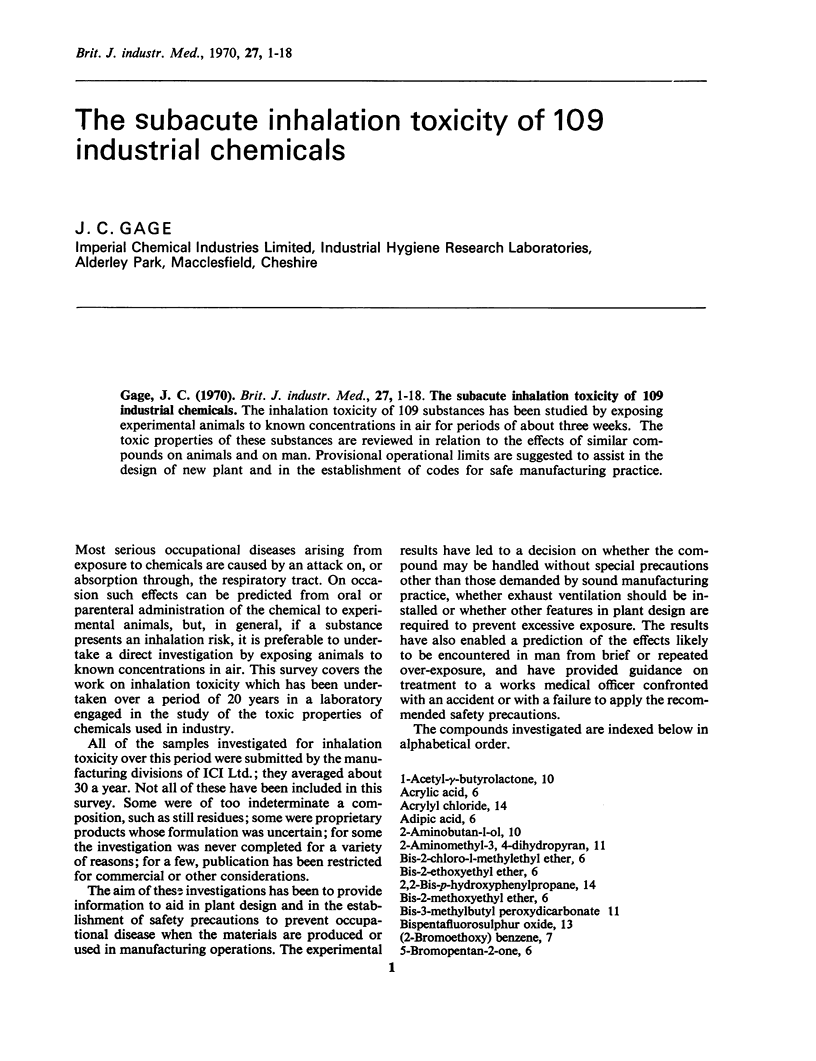
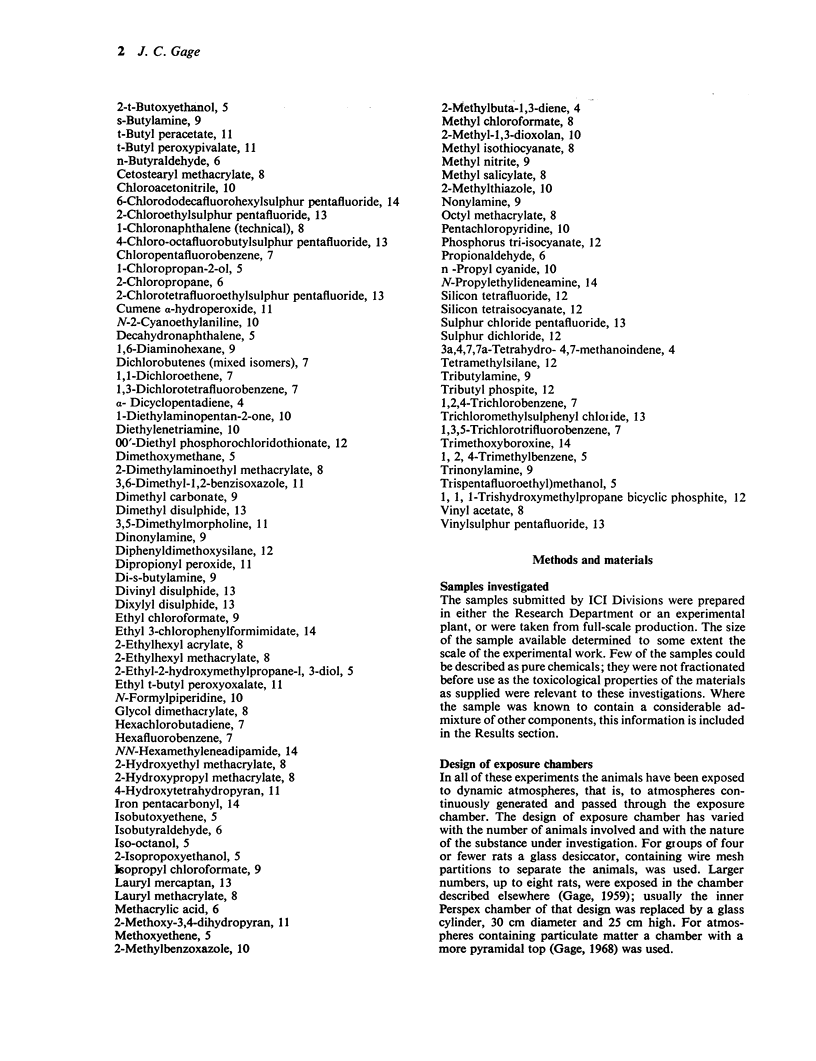
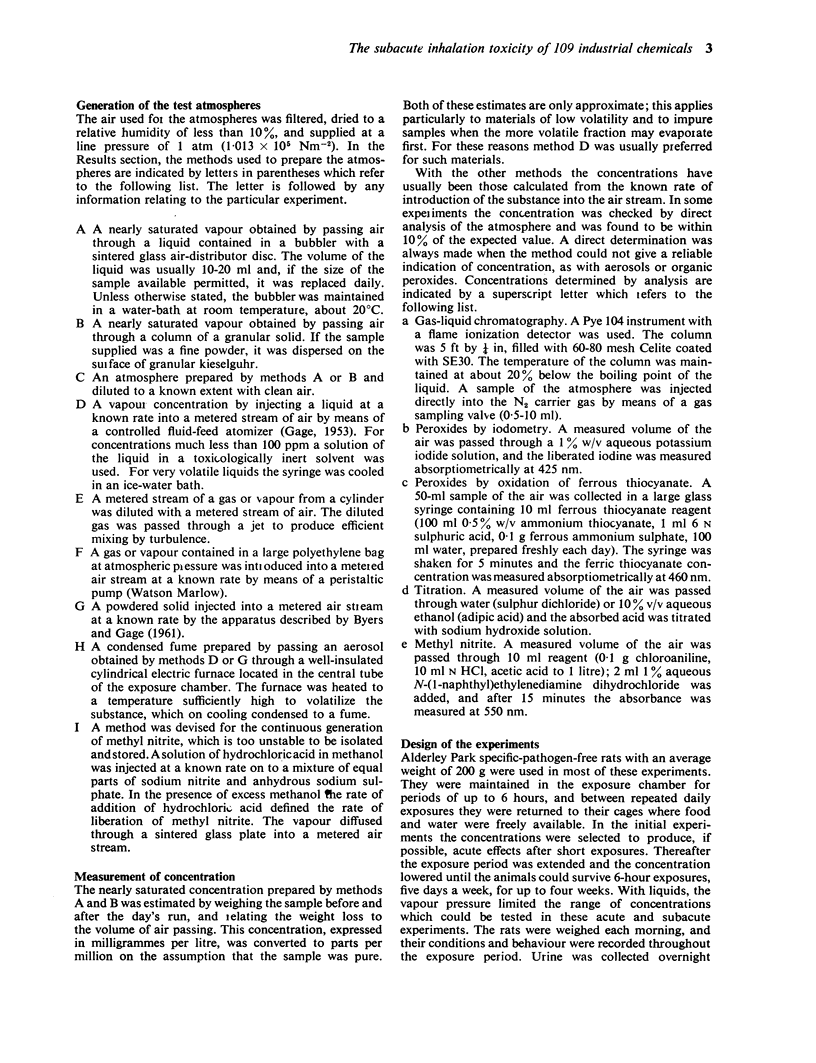

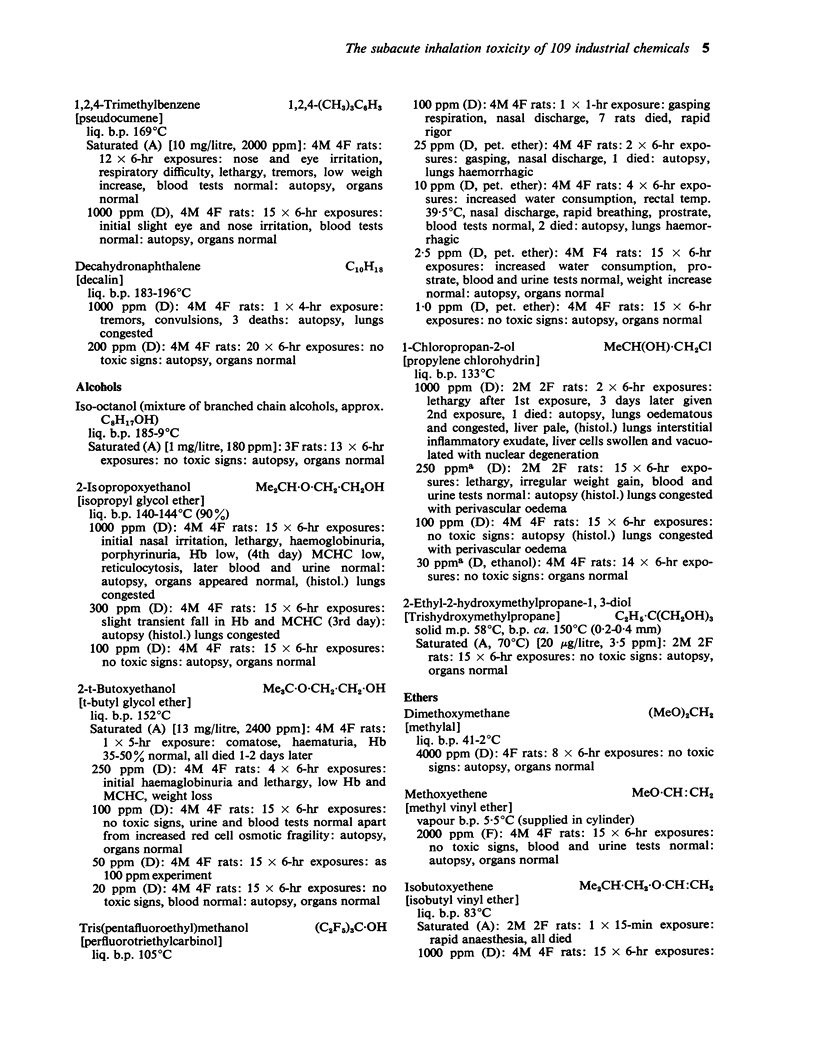
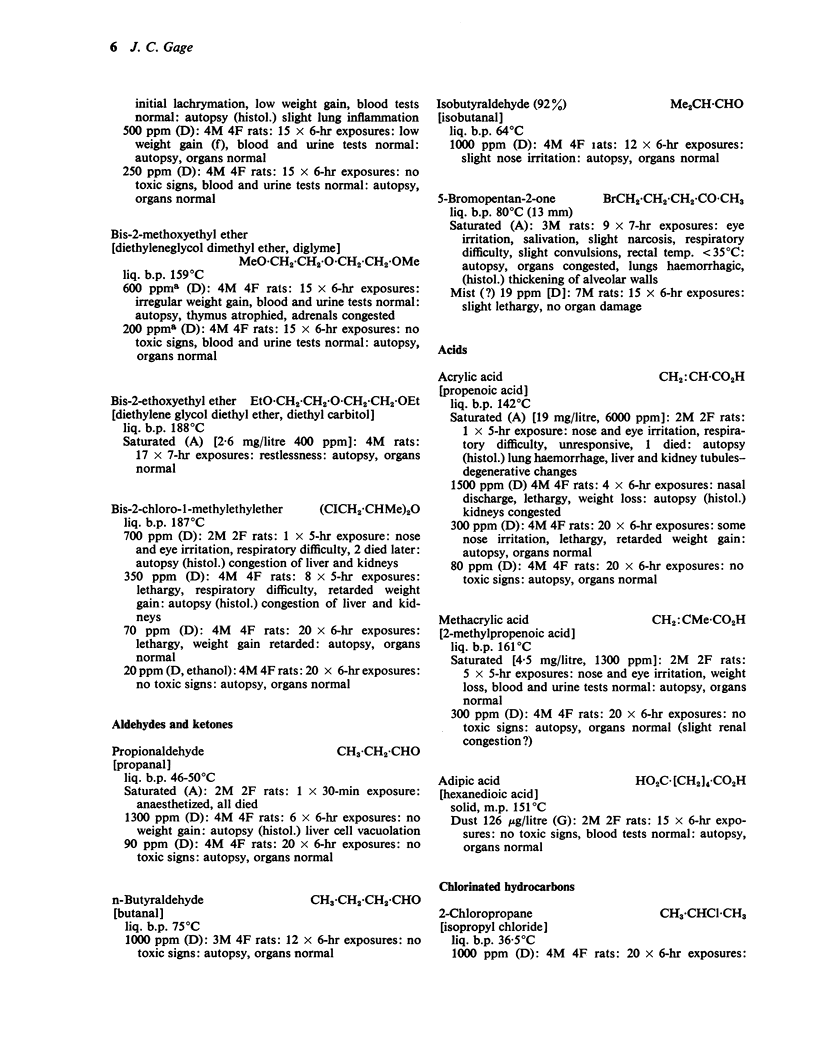
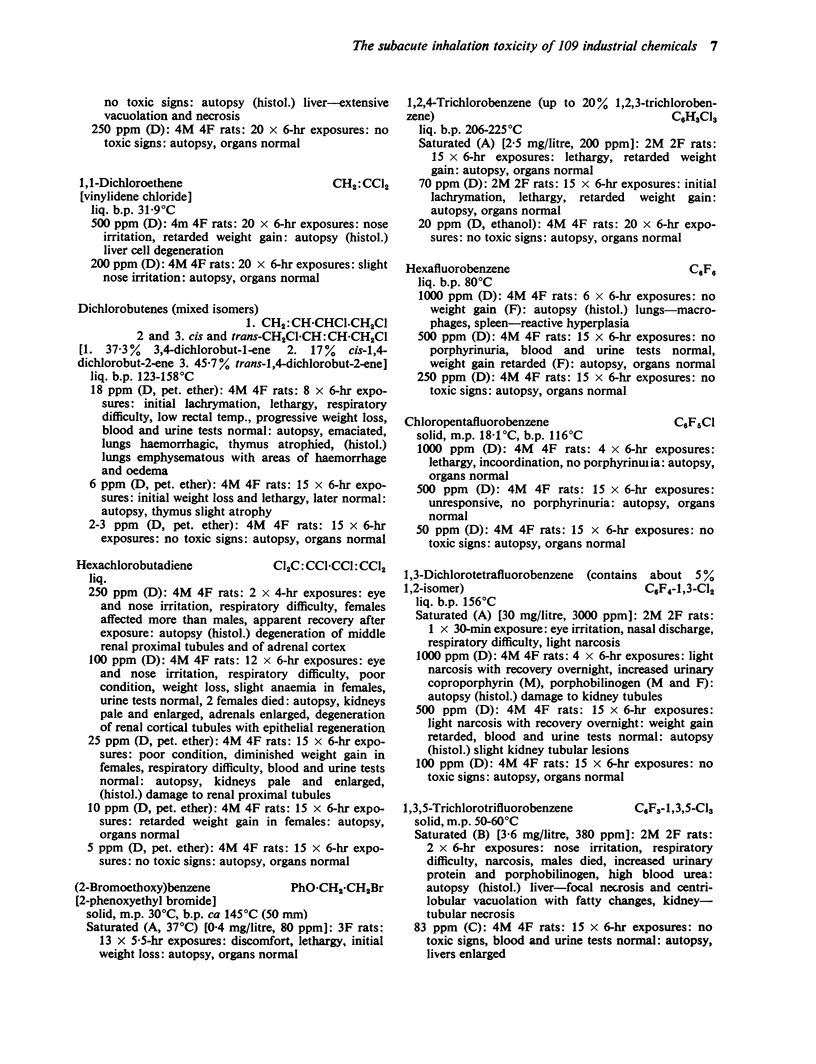


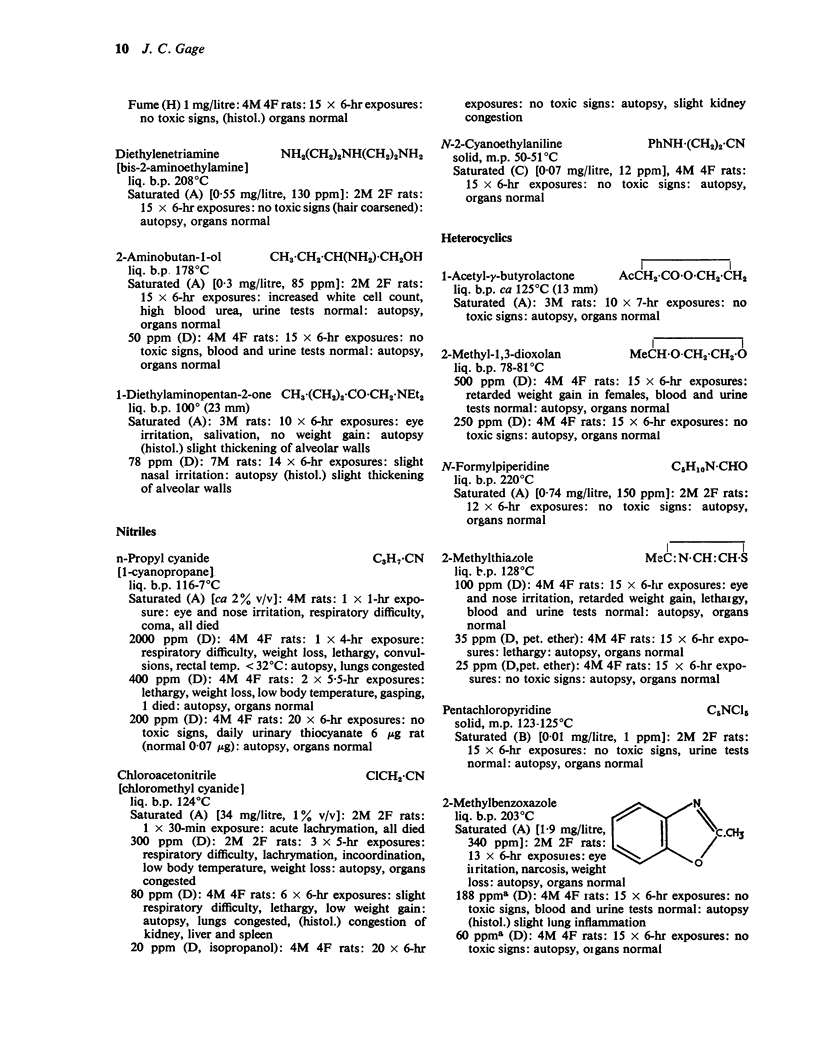

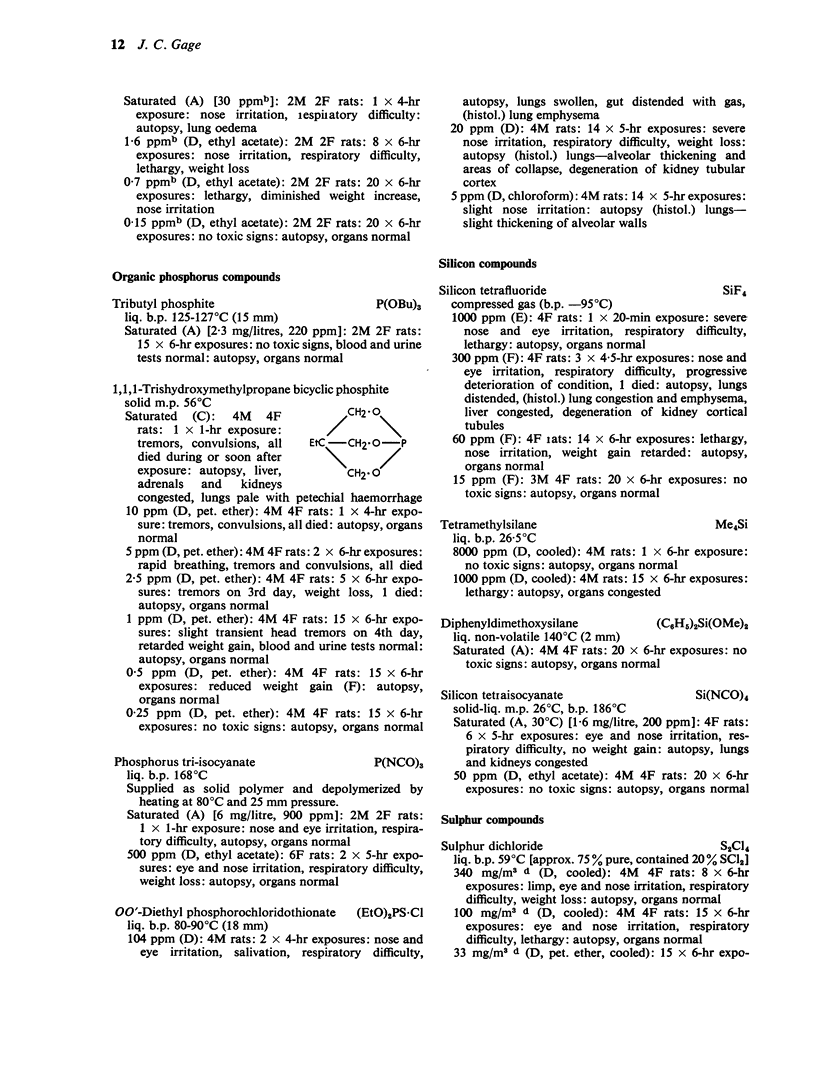
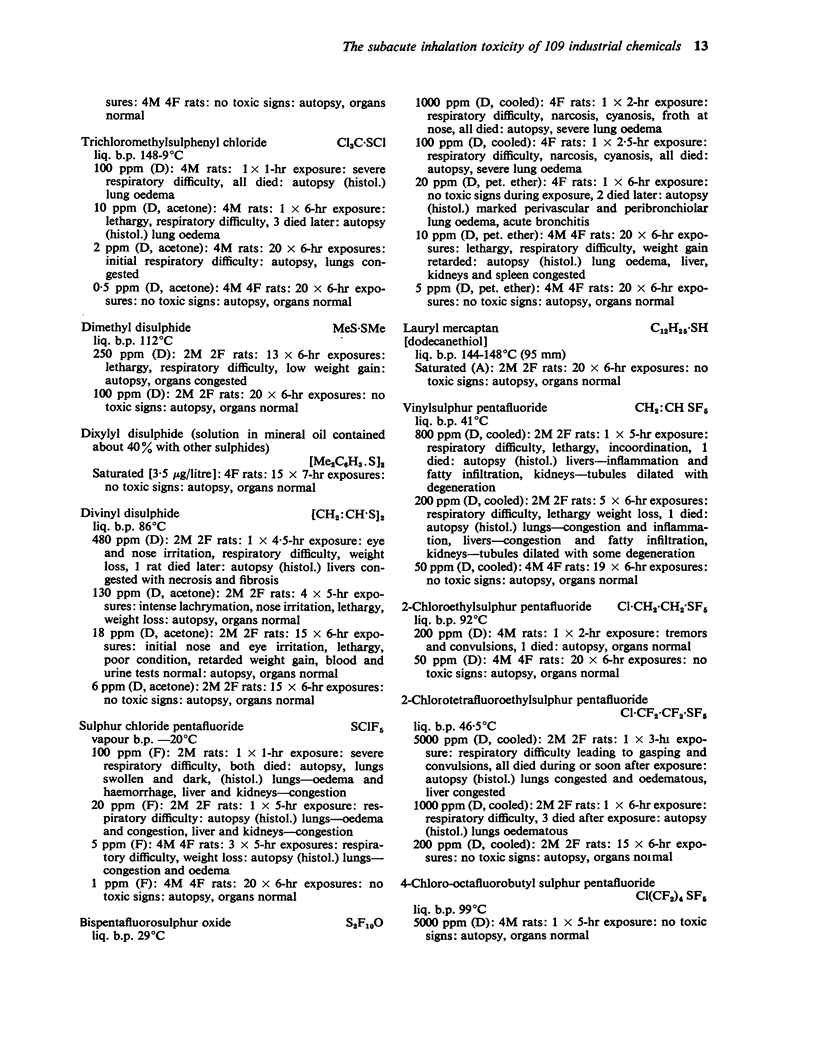
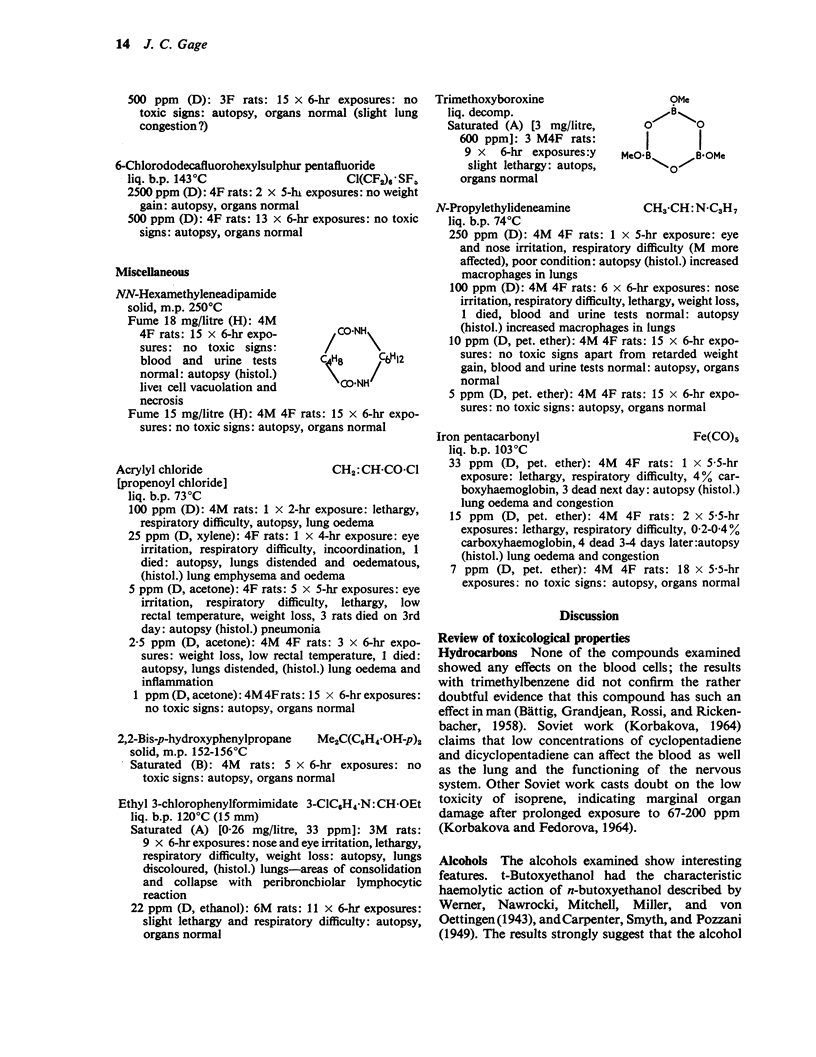

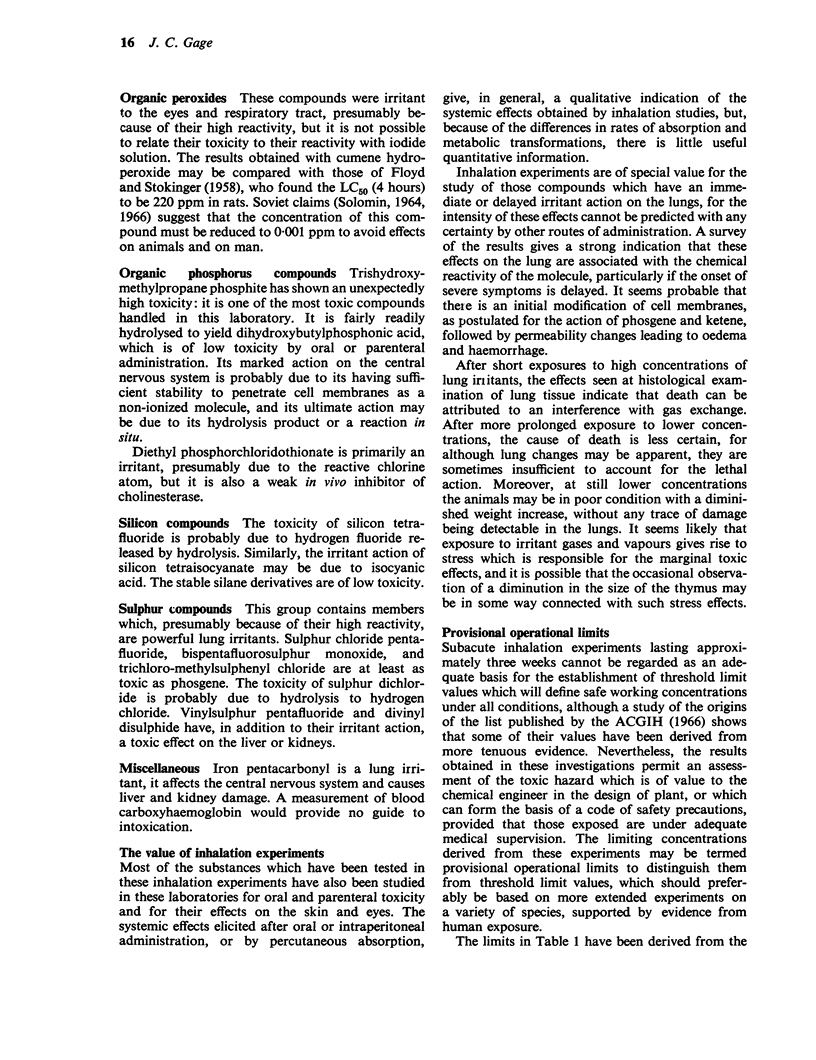

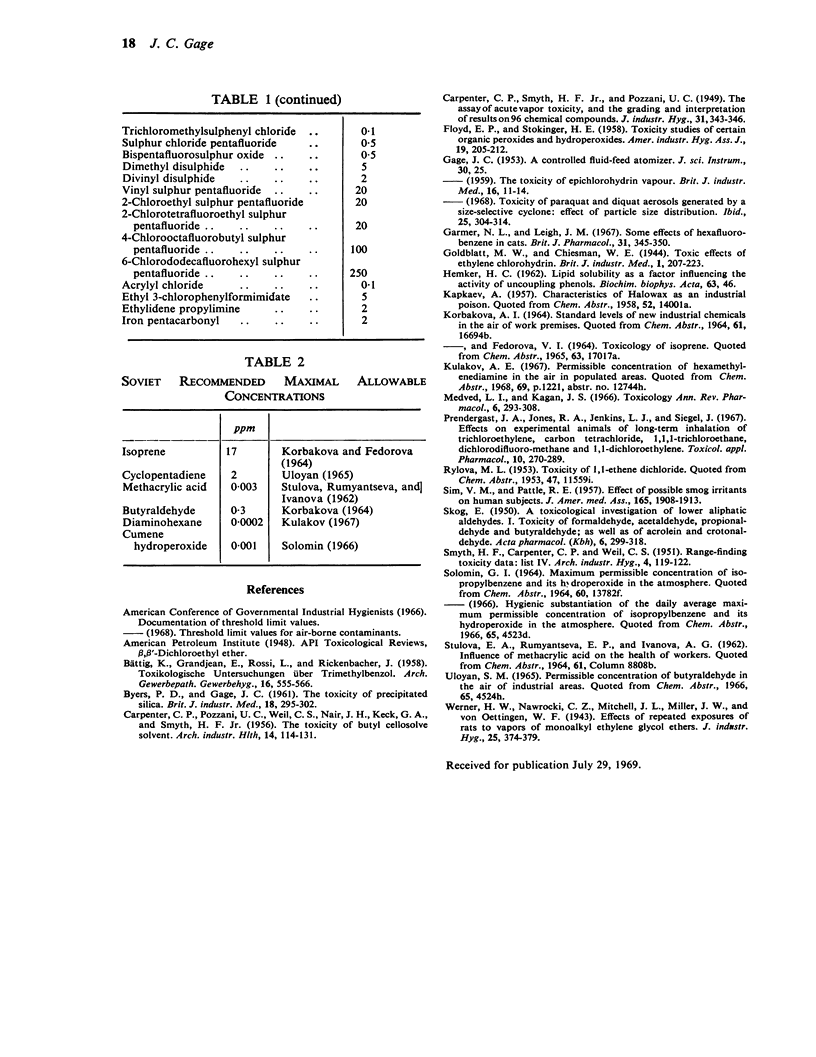
Selected References
These references are in PubMed. This may not be the complete list of references from this article.
- BATTIG K., GRANDJEAN E., ROSSI L., RICKENBACHER J. Toxikologische Untersuchungen über Trimethylbenzol. Arch Gewerbepathol Gewerbehyg. 1958;16(5):555–566. [PubMed] [Google Scholar]
- BYERS P. D., GAGE J. C. The toxicity of precipitated silica. Br J Ind Med. 1961 Oct;18:295–302. doi: 10.1136/oem.18.4.295. [DOI] [PMC free article] [PubMed] [Google Scholar]
- CARPENTER C. P., KECK G. A., NAIR J. H., 3rd, POZZANI U. C., SMYTH H. F., Jr, WEIL C. S. The toxicity of butyl cellosolve solvent. AMA Arch Ind Health. 1956 Aug;14(2):114–131. [PubMed] [Google Scholar]
- CARPENTER C. P., SMYTH H. F., Jr, POZZANI U. C. The assay of acute vapor toxicity, and the grading and interpretation of results on 96 chemical compounds. J Ind Hyg Toxicol. 1949 Nov;31(6):343–346. [PubMed] [Google Scholar]
- FLOYD E. P., STOKINGER H. E. Toxicity studies of certain organic peroxides and hydroperoxides. Am Ind Hyg Assoc J. 1958 Jun;19(3):205–212. doi: 10.1080/00028895809343577. [DOI] [PubMed] [Google Scholar]
- HEMKER H. C. Lipid solubility as a factor influencing the activity of uncoupling phenols. Biochim Biophys Acta. 1962 Sep 10;63:46–54. doi: 10.1016/0006-3002(62)90337-2. [DOI] [PubMed] [Google Scholar]
- Medved L. I., Kagan J. S. Toxicology. Annu Rev Pharmacol. 1966;6:293–308. doi: 10.1146/annurev.pa.06.040166.001453. [DOI] [PubMed] [Google Scholar]
- Prendergast J. A., Jones R. A., Jenkins L. J., Jr, Siegel J. Effects on experimental animals of long-term inhalation of trichloroethylene, carbon tetrachloride, 1,1,1-trichloroethane, dichlorodifluoromethane, and 1,1-dichloroethylene. Toxicol Appl Pharmacol. 1967 Mar;10(2):270–289. doi: 10.1016/0041-008x(67)90110-x. [DOI] [PubMed] [Google Scholar]
- SIM V. M., PATTLE R. E. Effect of possible smog irritants on human subjects. J Am Med Assoc. 1957 Dec 14;165(15):1908–1913. doi: 10.1001/jama.1957.02980330010003. [DOI] [PubMed] [Google Scholar]
- SMYTH H. F., Jr, CARPENTER C. P., WEIL C. S. Range-finding toxicity data: List IV. AMA Arch Ind Hyg Occup Med. 1951 Aug;4(2):119–122. [PubMed] [Google Scholar]


